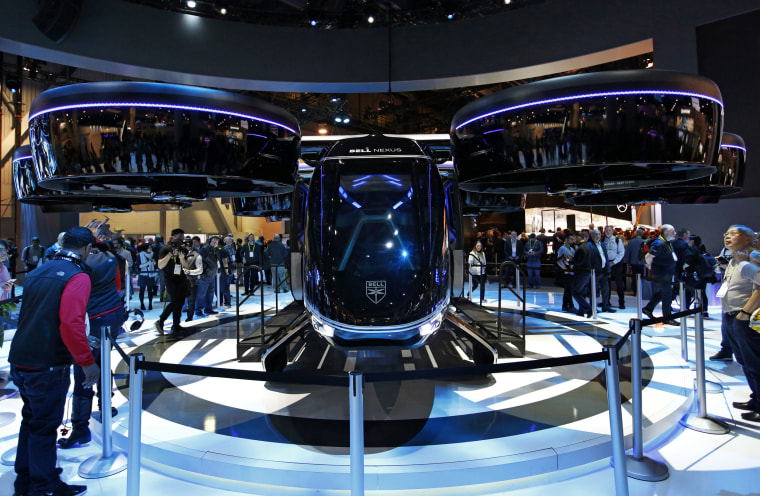LAS VEGAS — While CES attendees are still quite a few years away from being able to hop in a flying car and travel to the annual technology show, several concepts displayed at the 2019 event this week provided a glimpse of what the future could look like.
That starts with hailing an Uber copter — possibly as soon as the mid 2020s. At CES, Textron’s Bell division, a partner in the Uber Elevate flying car initiative, showed off its new air taxi concept called the Nexus.
While it may fly, make no mistake, the Nexus looks more like a car than an airplane. The concept uses six tilted fans to aid in takeoffs and landings, which are powered by a hybrid-electric propulsion system. Inside the vehicle, four passengers and a pilot can see their flight path projected onto a screen.
Uber has said it’s planning to roll out its air vehicles by 2023 in certain cities, targeting the Dallas-Fort Worth area and Los Angeles as its first domestic markets.
“This technology is intriguing, and it seems it’s finally going to arrive in our lifetime,” said Karl Brauer, executive publisher of Cox Automotive.
Future flying car passengers were able to get a glimpse of what travel will be like by trying a VR simulator that allows them to pilot the Pal-V Liberty concept, which looks like a hybrid of a sports car and a helicopter.
Electrafly also showed off its flying car concept, which resembles a flying motorcycle with wings. The concept shown at CES can carry one rider, which the company said is “ideal for first responders or military special forces. Other versions will be scaled for air taxi or search and rescue, and smaller versions will be ideal for shipping and package delivery.”
While the idea of flying cars has long been regarded as a science fiction dream, the new prototypes show that it’s even closer to becoming a reality. However, the adoption of flying cars still faces major regulatory roadblocks.
“The legal hurdles related to small flying machines are arguably a bigger challenge than mastering the technology. These issues will make it hard for personal or compact commercial aircraft to take flight, and even harder for a substantial number to offset ground traffic,” said Brauer.
“If you’re banking on ‘Uber In The Air,’ well, don’t take that job with the long commute just yet,” he said.
But the future does look promising. Uber’s forecasts show how its Uber Elevate ambitions could make longer commutes economical: A commute between San Francisco and San Jose, which would typically take two hours during rush hour and cost $111, would be cut down to just 15 minutes. That route by air could initially cost $129, with the price dropping to $43 in the near term and $20 in the long term, according to a forecast from Uber.
